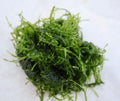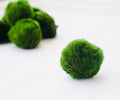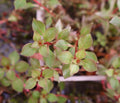A Basic Guide to Vallisneria Plant Propagation
In this blog, we are going to embark on a journey into the world of Vallisneria, and we are going to delve into the basics of propagation while exploring some tips on how to take care of this remarkable aquatic plant.
Vallisneria is an aquatic plant that is known for its ability to propagate through cross-pollination and through runners. It is considered an evergreen perennial in which a natural annual die-off takes place, which makes it essential to take hold of its life cycle and the reason it melts and withers.
Do not be surprised if you happen to see your Vallisneria plant melting. There are some factors that cause this phenomenon, such as the runners, fast reproduction, and tank water conditions. This most commonly happens during the first 30 days of the acclimatization period, wherein your new plant looks stagnant and is not improving before resuming its growth, so patience is the key to this occurrence.
Vallisneria is a real heavy root feeder, which is why it is recommended to be planted in nutrient-rich soil. We recommend using dirt as a primary substrate and then covering it with sand of your choice. Also, be mindful of the liquid CO2 and algae treatments that you want to apply. If it is not properly done, it will harm this fast-growing plant. Bear in mind that there should be a balance between the substrate, nutrients, and water conditions in order for Vallisneria to thrive successfully.
Propagation Techniques
Now, let us go to the exciting part of the topic, which is propagation. One way to propagate this plant is by separating the runners, which triggers the plant to come up with many shoots. Snipping the runners just close enough to the plant will enable them to grow healthy and also stimulate the development of the new runners.
To make the transition successfully,you will need to have proper root and leaf maintenance. Make sure to trim the dead leaves in order to prevent Vallisneria from feeding nutrients on irreparable leaves, which is stealing the nutrients from the healthy parts of the plant. Not only that, trimming dying roots can also help to rejuvenate and speed up the nutrient absorption of the plant.
Lastly, one of the crucial processes in propagation is not to bury the Vallisneria plant too deeply. Just plant it above the crown, as burying it too deep will cause adverse effects on the plant's health.
And that is all that we can share with you if you are planning to propagate your Vallisneria plant by yourself.
















